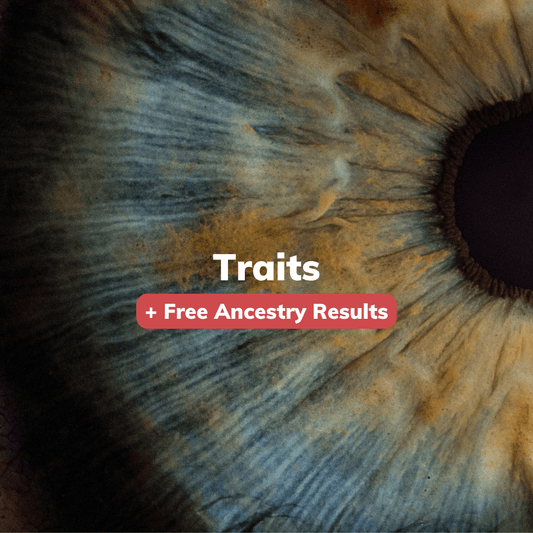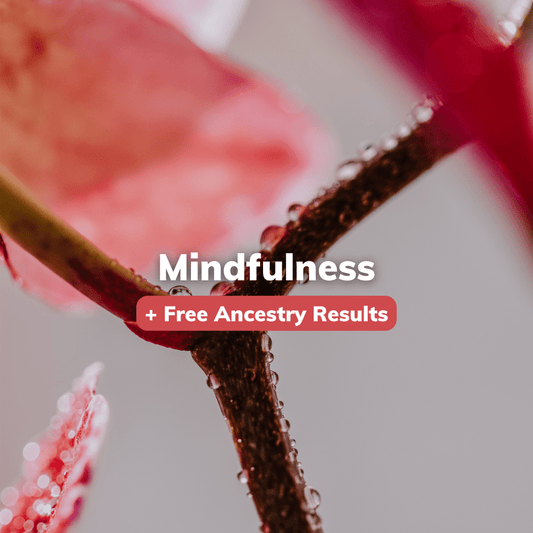
Running the risk of sunburn for a suntan
BioCertica Content TeamWritten by: Jonine Moller, M.Sc. in Sports Science
Sunbathing has a long history of being popular. In fact, in the 1930s and 1940s, it was prescribed as medical advice for children. The reasoning was that more sun exposure should counter the high prevalence of vitamin D deficiency [1].
Sunbathing and getting a suntan remains popular to this day. Tanned skin makes people feel better, healthier, and more attractive [1].
Unfortunately, attaining a suntan does not come without risk. To a degree, sun exposure is good and needed, but there is a delicate balance between enough and too much. Even as early as pre-1900, the dangers of too much sun exposure became evident [1].
Only in the late 1900s did sun-protection campaigns actively start [1]. It is the ultraviolet UV rays of the sun that are harmful. These rays are primarily classified as A or B UV rays.
UVA sun rays are the most abundant. Although these rays do not cause sunburn, they do cause skin aging and degeneration [2]. Sun damage causes the death of skin cells. The dying of cells is a protective mechanism against cancer [3].
UVB rays are the most harmful. They damage the DNA of the cells. If this damage is severe enough and beyond repair, it greatly increases the risk for cancer [2, 3]. Cancer caused by sunburn includes melanomas but may also be other types of skin cancer [3]. The latter include basal and squamous cell carcinomas [1].
Indoor tanning is not without risk either. The opening of tanning salons with sunbeds went along with a sharp rise in melanoma prevalence. Creams that contain temporary skin dyes seem to be safe. Other unnatural methods used to obtain a tan quickly hold other health risks [1].
Timing and duration of sun exposure are the most significant risk determinants of sunburn. Wearing protective clothing is just as important as is the use of sunscreen. In other words, your sunburn risk primarily depends on the protective measures you take.
Beliefs surrounding a suntan’s risks and aesthetic benefits are strong predictors of sunburn prevalence [4]. Numerous studies have also shown that binge drinking, and alcohol use increase the likelihood of sunburns [5].
Protecting yourself from exposure is all that you can do to ensure absolute safety from sun damage. Nonetheless, the level of protection that is necessary is greatly dependent on your skin’s pigmentation.
Skin color and subsequent sun sensitivity are highly genetically determined [6, 7, 8, 9, 10]. Sun-sensitive skin goes hand in hand with skin that is resistant to tanning and burns easily. Exposure to sunlight stimulates increased melanin production for an increase in pigmentation [7].
By tanning or producing more melanin, the skin protects itself against sun damage. With lighter skin, a decreased tanning response also increases susceptibility to harm induced by sun exposure. Genes determine pigmentation and tanning ability [7].
Thus, fairer skin with less melanin production in response to sun exposure is more prone to sunburn and risk for cancer [7]. As skin pigmentation increases, sensitivity to UV rays decreases. The skin’s sun sensitivity determines how prone it is to sunburn, photoaging, and skin cancer [11].
Redness and pain (erythema) are the primary symptoms of a first-degree sunburn. Blisters are a sign of a second-degree burn. Ulcerations develop with third-degree burns [2].
Aloe vera gel is widely used for skincare due to its moisturizing properties. It is, however, also effective as a sunscreen agent. Aloe vera gel blocks UVA and UVB rays and aids in stopping sunburns via immune system stimulation [12].
The use of sunscreen may increase sunburn risk if used with conflicting motives. Sunscreen allows the skin to withstand long periods in the sun without burning. However, using sunscreen to get tanned, people tend to prolong their time in the sun too much [4].
Sunscreen’s SPF (sun protection factor) is calculated by determining how much longer you can stay in the sun without burning. Varying SPFs thus indicate different time frames of sun protection. Protection is provided by the absorption or filtering of UV rays [12].
Treatments such as anti-inflammatory medications and after sun gels may aid with pain relief after sunburns. Damage induced by the sun can, however, not be treated - it is irreversible. Only symptoms can be treated to a limited degree [2, 13].
Even though skin pigment is crucial for protection against sun damage, not only pigmentation determines skin cancer risk [10]. Your skin’s sun sensitivity influences how prone you are to sunburn and skin cancer, but also aging and wrinkles.
When it comes to skin aging and damage, prevention is the only viable treatment. Your genetic resistance to tanning is directly linked to your skin’s ability to protect itself against the harmful effects of UVA and UVB rays.
Find out how resistant you genetically are to tanning with BioCertica’s skincare DNA tests.
References
[1] Randle, H. W. (1997). Suntanning: Differences in perceptions throughout history. Mayo Clinic Proceedings, 72(5), 461–466. https://doi.org/10.4065/72.5.461
[2] Miners, A. L. (2010). The diagnosis and emergency care of heat related illness and sunburn in athletes: A retrospective case series. The Journal of the Canadian Chiropractic Association, 54(2), 107–117. http://www.ncbi.nlm.nih.gov/pubmed/20520755
[3] Van Laethem, A., Claerhout, S., Garmyn, M., & Agostinis, P. (2005). The sunburn cell: Regulation of death and survival of the keratinocyte. International Journal of Biochemistry and Cell Biology, 37(8), 1547–1553. https://doi.org/10.1016/j.biocel.2005.02.015
[4] Bränström, R., Kasparian, N. A., Chang, Y. M., Affleck, P., Tibben, A., Aspinwall, L. G., Azizi, E., Baron-Epel, O., Battistuzzi, L., Bergman, W., Bruno, W., Chan, M., Cuellar, F., Dȩbniak, T., Pjanova, D., Ertmański, S., Figl, A., Gonzalez, M., Hayward, N. K., … Brandberg, Y. (2010). Predictors of sun protection behaviors and severe sunburn in an international online study. Cancer Epidemiology Biomarkers and Prevention, 19(9), 2199–2210. https://doi.org/10.1158/1055-9965.EPI-10-0196
[5] Brown, T. T., Quain, R. D., Troxel, A. B., & Gelfand, J. M. (2006). The epidemiology of sunburn in the US population in 2003. Journal of the American Academy of Dermatology, 55(4), 577–583. https://doi.org/10.1016/j.jaad.2006.05.029
[6] Liu, F., Visser, M., Duffy, D. L., Hysi, P. G., Jacobs, L. C., Lao, O., Zhong, K., Walsh, S., Chaitanya, L., Wollstein, A., Zhu, G., Montgomery, G. W., Henders, A. K., Mangino, M., Glass, D., Bataille, V., Sturm, R. A., Rivadeneira, F., Hofman, A., … Kayser, M. (2015). Genetics of skin color variation in Europeans: genome-wide association studies with functional follow-up. Human Genetics, 134(8), 823–835. https://doi.org/10.1007/s00439-015-1559-0
[7] Nan, H., Kraft, P., Qureshi, A. A., Guo, Q., Chen, C., Hankinson, S. E., Hu, F. B., Thomas, G., Hoover, R. N., Chanock, S., Hunter, D. J., & Han, J. (2009). Genome-Wide Association Study of Tanning Phenotype in a Population of European Ancestry. Journal of Investigative Dermatology, 129(9), 2250–2257. https://doi.org/10.1038/jid.2009.62
[8] Stokowski, R. P., Pant, P. V. K., Dadd, T., Fereday, A., Hinds, D. A., Jarman, C., Filsell, W., Ginger, R. S., Green, M. R., Van Der Ouderaa, F. J., & Cox, D. R. (2007). A genomewide association study of skin pigmentation in a South Asian population. American Journal of Human Genetics, 81(6), 1119–1132. https://doi.org/10.1086/522235
[9] Sulem, P., Gudbjartsson, D. F., Stacey, S. N., Helgason, A., Rafnar, T., Jakobsdottir, M., Steinberg, S., Gudjonsson, S. A., Palsson, A., Thorleifsson, G., Pálsson, S., Sigurgeirsson, B., Thorisdottir, K., Ragnarsson, R., Benediktsdottir, K. R., Aben, K. K., Vermeulen, S. H., Goldstein, A. M., Tucker, M. A., … Stefansson, K. (2008). Two newly identified genetic determinants of pigmentation in Europeans. Nature Genetics, 40(7), 835–837. https://doi.org/10.1038/ng.160
[10] Zhang, M., Song, F., Liang, L., Nan, H., Zhang, J., Liu, H., Wang, L. E., Wei, Q., Lee, J. E., Amos, C. I., Kraft, P., Qureshi, A. A., & Han, J. (2013). Genome-wide association studies identify several new loci associated with pigmentation traits and skin cancer risk in European Americans. Human Molecular Genetics, 22(14), 2948–2959. https://doi.org/10.1093/hmg/ddt142
[11] Del Bino, S., Sok, J., Bessac, E., & Bernerd, F. (2006). Relationship between skin response to ultraviolet exposure and skin color type. Pigment Cell Research, 19(6), 606–614. https://doi.org/10.1111/j.1600-0749.2006.00338.x
[12] Goswami, P. K., Samant, M., & Srivastava, R. (2013). Natural Sunscreen Agents: A Review. Scholars Academic Journal of Pharmacy (SAJP), 2(6), 458-463.
[13] Han, A., & Maibach, H. I. (2004). Management of acute sunburn. American Journal of Clinical Dermatology, 5(1), 39–47. https://doi.org/10.2165/00128071-200405010-00006

